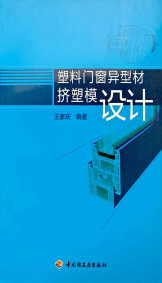
主要责任者: 王家庆
责任方式: 编著
出版者: 中国轻工业出版社
出版地: 北京
字数: 261 千字
页码: 214
开本: 16
中图分类号: TQ320.5
语种:中
定价:32.00
出版时间:2010-02
丛书多卷书否:否
书目简介:本册工具书共收录73条词条。
被引频次:3
| 词条 | 塑料门窗异型材挤塑模设计 |
| 类别 | 中文百科知识 |
| 释义 |  主要责任者: 王家庆 责任方式: 编著 出版者: 中国轻工业出版社 出版地: 北京 字数: 261 千字 页码: 214 开本: 16 中图分类号: TQ320.5 语种:中 定价:32.00 出版时间:2010-02 丛书多卷书否:否 书目简介:本册工具书共收录73条词条。 被引频次:3 |
| 随便看 |
开放百科全书收录579518条英语、德语、日语等多语种百科知识,基本涵盖了大多数领域的百科知识,是一部内容自由、开放的电子版国际百科全书。